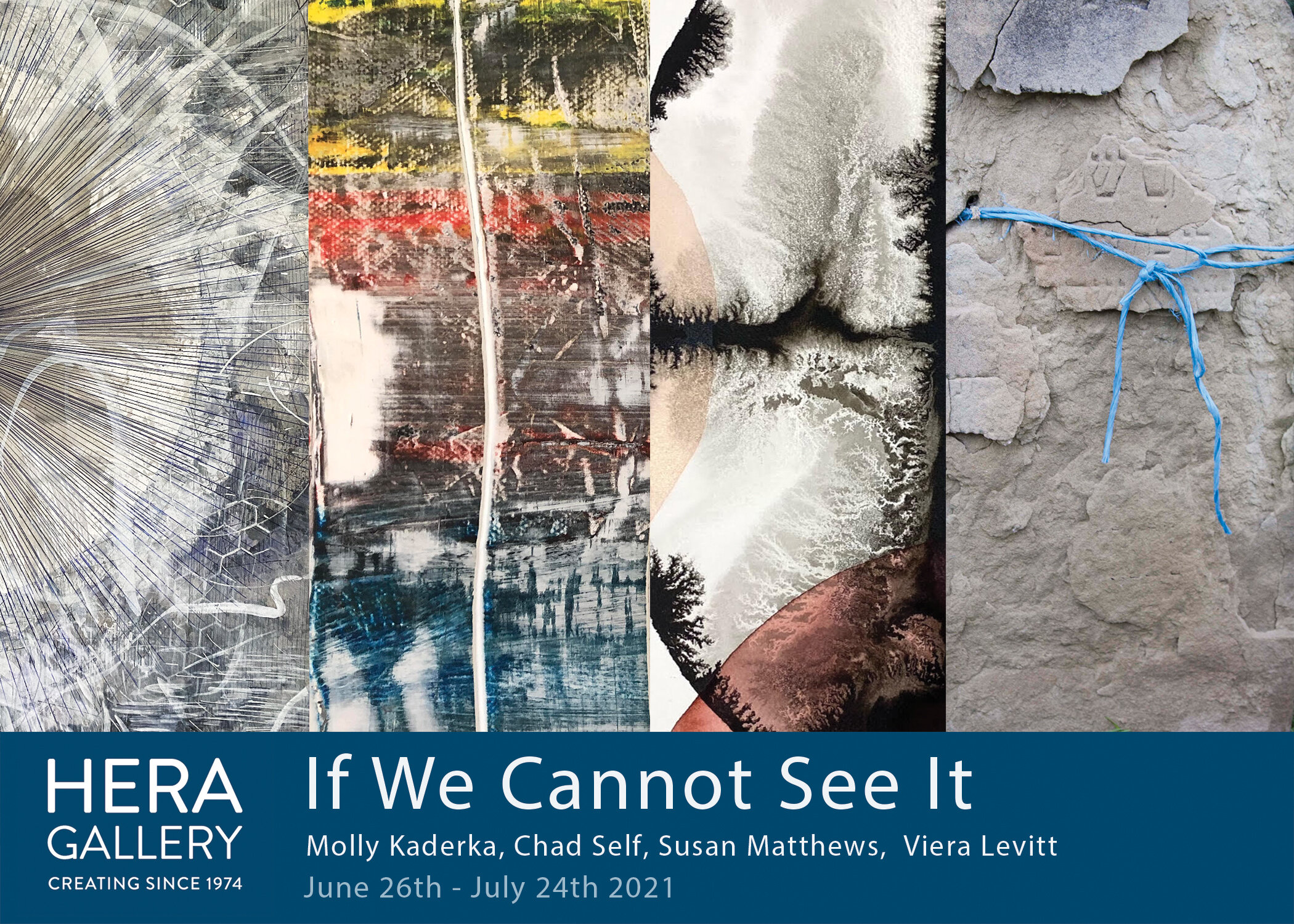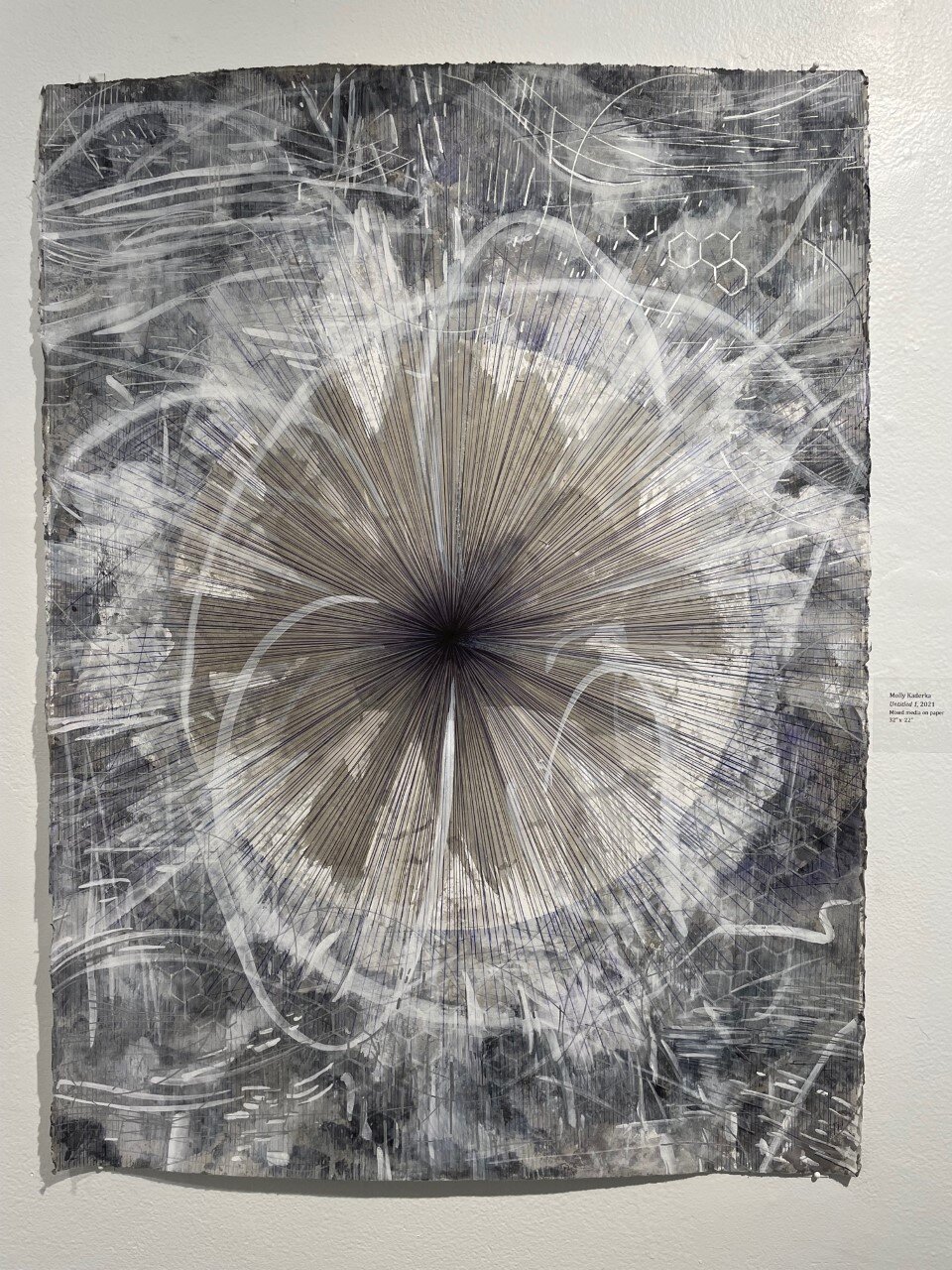If We Cannot See It
A Hera Members Exhibition Featuring: Molly Kaderka, Viera Levitt, Chad Amos Self, and Susan Matthews.
June 26 - July 24, 2021
Hera Gallery is proud to present the 2021 Summer Member Exhibition: If We Cannot See It. The show will be held at Hera Gallery at 10 High Street in Wakefield, RI, from June 26 - July 24, 2021. The public is invited to attend during our open Gallery hours, Wed- Fri (1-5pm) and Saturday (1-4pm.) Our opening celebration, Meet the Artist Night was held June 26th, 2021 from 4-6pm.
Molly Kaderka
Artist Statement:
My collective body of work as an artist stems from an earnest desire to create beauty and meaning. I find the most compelling way to do this is to use my artistic practice as a way to search for and evoke for my viewers elements of the sublime. To experience the sublime is to simultaneously feel and cognitively understand the serendipity and the insignificance of one’s own existence, and to submit to this experience in the face of something greater and more mysterious. This experience of both feeling and understanding how small we all are is unique to humans, but it is not an everyday or universal experience and it can be profoundly transformative. It is the great awareness of the world and one’s own place in it.
My recent series of drawings takes cues from both astronomy and quantum mechanical predictions.
Using monoprinting techniques and meticulous penwork, these drawings explore the balance between order and chaos as well as the visual language of the largest and smallest objects known to humans.
Chad Amos Self
Artist Statement:
My current work is about rediscovery and exploring faint memories from my past and solidifying those spaces in my present life. Memories are an interesting tool and I often find myself unable to completely grasp them and make them whole. My recent work is an attempt at isolating destinations from my past and documenting and experiencing them with fresh eyes.
For the last year, I have been creating paintings, sculptures, photographs, and videos based on themes surrounding my memories of nature, family, death, nostalgia and the liminality of dreams. The goal for this new series of work is to relate intangible and impalpable experiences, like my memories, into tangible, material forms.
Susan Matthews
Artist Statement:
Like many of us, I spent a great deal of time during the Covid-19 pandemic thinking about communities and connections between people. The recent pieces I am exhibiting explore some ideas about links, bonds and associations.
Separated is part of a series of drawings I made, some sent as postcards, in which half the drawing is on one sheet of paper and half on another. Reconnect asks the viewer to participate with the piece - reassembling the layered group-blob while referencing the puzzles that were so common during the pandemic. Tufted Rug with Knit Appendage and Two Connected are more tactile and literal representations of connections. The tufted rug incorporated a two-dimensional overlap and a three-dimensional “bridge”, while also encouraging a confusing tactile engagement. Two connected stretches out a multitude of bonds between two points. Lastly, Consumer Product Safety Confusion, the latest addition to my toy/tool series, sums up my experience seeing my mother during this past year. A desire to touch combined with fear and uncertainty.
I have much to be grateful for over this past year and a half, including the opportunity to make and show my work. Thank you for coming to see it.
Viera Levitt
Artist Statement:
Each time photographer and curator Viera Levitt visits her native Slovakia she makes a special trip to photograph a Jewish Cemetery located in the town where she grew up. The cemetery is hidden behind high walls and few people visit and only those who know about it for one reason or another. After a few rings of the door bell, Viera is let in by the caretaker. During the Holocaust, thousands of Jews were deported from Slovakia and many never returned from the Concentration Camps. The communist regime that followed the war did little to encourage a Jewish 'return,' to preserve cultural heritage or return confiscated property. The current caretaker had been a friend of one of the few who did come back. When the Jewish caretaker died, he passed on the cemetery and its responsibilities to a non-Jewish friend who agreed to live there.
The caretaker says that sometimes the Jewish Society, from the capital city, comes to cut the grass. Occasionally, somebody from abroad comes, stands silently, and puts a stone on the top of a gravestone. Mostly, however, the graves have only the company of cats, dogs, and household items scattered around the property. A blue rope and the indentation made by the pull of the woman's dog is present in the Hera Gallery exhibition. "For me,” says Viera, "the rope and the mark on the gravestone ties together the unfathomable tragedy of Holocaust, the lonely life of the caretaker, the powerful aura of this place and by now, the frayed memories of those who carried on their everyday lives in the town of my birth."
Thank you to Valerie Doran for her curatorial inspiration during the set up of this exhibition.






































